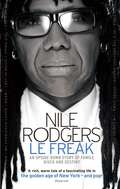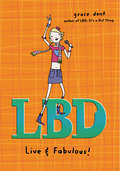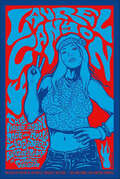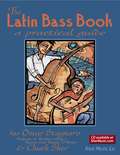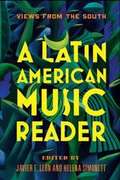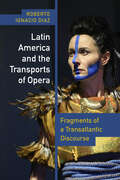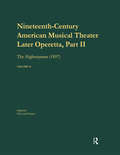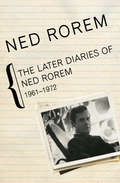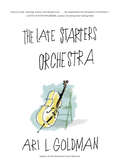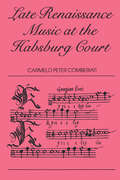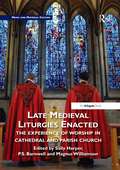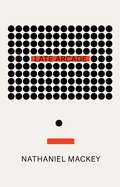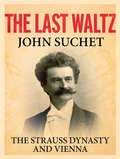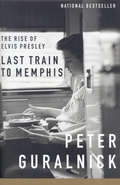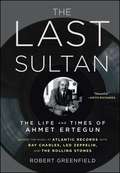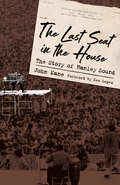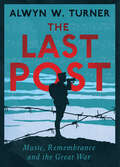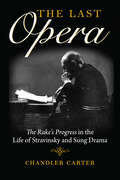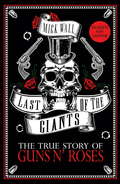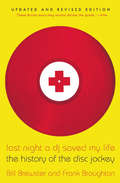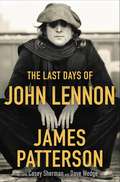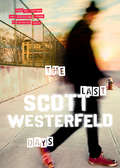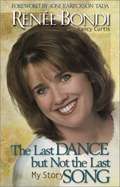- Table View
- List View
Le Freak
by Nile RodgersYou will hear a Nile Rodgers song today. It will make you happy. Today's pop music--genre-crossing, gender-bending, racially mixed, visually stylish, and dominated by dance music with global appeal--is the world that Nile Rodgers created. In the 1970s and 1980s, he wrote and produced the songs that defined that era and everything that came after: "Le Freak," "Good Times," "We Are Family," "Like a Virgin," "Modern Love," "I'm Coming Out," "The Reflex," "Rapper's Delight." Aside from his own band, Chic, he worked with everyone from Diana Ross and Madonna to David Bowie and Duran Duran (not to mention Mick Jagger, Debbie Harry, Bob Dylan, Eric Clapton, Michael Jackson, Prince, Rod Stewart, Robert Plant, Depeche Mode, Paul Simon, Peter Gabriel, Grace Jones, Bryan Ferry, INXS, and the B-52's), transforming their music, selling millions of records, and redefining what a pop song could be. But before he reinvented pop music, Nile Rodgers invented himself. He was born into a mixed-race, bicoastal family of dope-fiend bohemians who taught him everything he needed to know about love, loss, fashion, art, music, and the subversive power of underground culture. The stars of the scene were his glamorous teenage mom and heroin-addicted Jewish stepfather, but there were also monkeys, voodoo orishas, jazz cats, and serial killers in the mix. By the time he was sixteen, Nile was on his own, busking through the sixties, half-hippie and half-Black Panther. He jammed with Jimi Hendrix, rocked out at Max's Kansas City, toured with Big Bird on Sesame Street's road show, and played in the legendary Apollo Theater house band behind history's greatest soul singers. And then one night, he discovered disco. During pop's most glamorous and decadent age, Nile Rodgers wrote the biggest records and lived behind the velvet rope--whether he was holding court in the bathroom stalls at Studio 54, club hopping with Madonna, or scarfing down White Castle burgers with Diana Ross. Le Freak is the fascinating inside story of pop and its tangled roots, narrated by the man who absorbed everything in his topsy-turvy life--the pain and euphoria and fear and love--and turned it into some of the most sparklingly ebullient pop music ever recorded. Nile Rodgers is a brilliant storyteller who gives readers the surprising behind-the-scenes tales of the songs we all know, and lovingly re-creates the lost outsider subcultures--from the backstreets of 1950s Greenwich Village to the hills of 1960s Southern California to the demimonde of New York's 1970s and 1980s discos and clubs--that live on in his music and in the throbbing, thriving world of pop he helped to set in motion.From the Hardcover edition.
Le Freak: An Upside Down Story of Family, Disco and Destiny
by Nile RodgersYou will hear a Nile Rodgers song today. It will make you happy. Legendary producer and co-founder of Chic, Nile wrote 'We are Family' for Sister Sledge and 'I'm Coming Out' for Diana Ross, and then produced Let's Dance for David Bowie and Like a Virgin for Madonna. But before he reinvented pop music Nile Rodgers invented himself. Le Freak is an astonishing, exuberant and inspiring story of a creative genius. It is also a stunning recreation of a time and place - by the man who wrote its soundtrack.
LBD: Live and Fabulous!
by Grace DentAt long last, the LBD (Les Bambinos Dangereuses to the uninformed) have finished another awful term at Blackwell School. Finally, Ronnie, Claude, and Fleur are free! If only they had plans for the summer . . . and if only Ronnie's boyfriend Jimi Steele would get his act together. . . . Just as their bliss fades into the boring summer blues, rock god and the LBD's friend Spike Saunders sends them free tickets to the Astlebury Music Festival. Brilliant! Soon enough, the LBD are on their way for a weekend of henna tattoos, festival chic, awesome music, and about a million totally lush festival lads. In other words: the natural environment for the LBD! Packed with the same humor and joie de vivre that made LBD: It's a Girl Thing an international success, LBD: Live & Fabulous! is a sassy, classy romp sure to win the LBD a whole new legion of fans.
Laurel Canyon: The Inside Story of Rock-and-Roll's Legendary Neighborhood
by Michael WalkerMichael Walker’s Laurel Canyon presents the inside story of the once hottest rock and roll neighborhood in LA.In the late sixties and early seventies, an impromptu collection of musicians colonized a eucalyptus-scented canyon deep in the Hollywood Hills of Los Angeles and melded folk, rock, and savvy American pop into a sound that conquered the world as thoroughly as the songs of the Beatles and the Rolling Stones had before them. Thirty years later, the music made in Laurel Canyon continues to pour from radios, iPods, and concert stages around the world. During the canyon's golden era, the musicians who lived and worked there scored dozens of landmark hits, from "California Dreamin'" to "Suite: Judy Blue Eyes" to "It's Too Late," selling tens of millions of records and resetting the thermostat of pop culture.In Laurel Canyon, veteran journalist Michael Walker tells the inside story of this unprecedented gathering of some of the baby boomer's leading musical lights—including Joni Mitchell; Jim Morrison; Crosby, Stills, and Nash; John Mayall; the Mamas and the Papas; Carole King; the Eagles; and Frank Zappa, to name just a few—who turned Los Angeles into the music capital of the world and forever changed the way popular music is recorded, marketed, and consumed.
Laughter In The Dark: Egypt To The Tune Of Change
by Yasmine El RashidiA decade ago, millions of Egyptians took to the streets in a people-led revolution that captivated the world’s attention and sent ripples across the Middle East. But the so-called “Arab Spring” quickly faded, and a return to the status quo—of authoritarian rule—was cemented. What happened to the energy and desire for change? In Egypt, the answer lies in its youth, who comprise the bulk of the country’s fast-growing 106 million citizens. Sixty percent of the population is under the age of twenty-five, and their world views are very much influenced by social media: TikTok is their primary language and medium of choice. Music is their means of expression—in particular, a thriving hip-hop scene known as mahraganat. This music has given voice to deep dissatisfaction with the Egyptian state and the overall conditions of Egyptian society and culture. Could this be the start of a force for change? Laughter in the Dark is a riveting portrait of a country that is being transformed, for good or bad, by the rise of a fresh youth culture.
The Latin Bass Book
by Sher Music Oscar Stagnaro Chuck SherThe only comprehensive book ever published on how to play bass in authentic Afro-Cuban, Brazilian, Caribbean and various South American styles. Over 250 pages of exact transcriptions of every note Oscar plays on the 3 accompanying CDs. Endorsed by Down Beat magazine, Latin Beat magazine, Benny Rietveld, etc.
A Latin American Music Reader: Views from the South
by Javier F Leon Helena SimonettJavier F. León and Helena Simonett curate a collection of essential writings from the last twenty-five years of Latin American music studies. Chosen as representative, outstanding, and influential in the field, each article appears in English translation. A detailed new introduction by León and Simonett both surveys and contextualizes the history of Latin American ethnomusicology, opening the door for readers energized by the musical forms brought and nurtured by immigrants from throughout Latin America. Contributors: Marina Alonso Bolaños, José Jorge de Carvalho, Maria Ignêz Cruz Mello, Gonzalo Camacho DÃaz, Claudio F. DÃaz, Rodrigo Cantos Savelli Gomes, Juan Pablo González, Javier F. León, Rubén López Cano, Angela Lühning, Jorge MartÃnez Ulloa, Julio MendÃvil, Carlos Miñana Blasco, Raúl R. Romero, Iñigo Sánchez Fuarros, Carlos Sandroni, Carolina SantamarÃa Delgado, Helena Simonett, Rodrigo Torres Alvarado, and Alejandro Vera.
Latin America and the Transports of Opera: Fragments of a Transatlantic Discourse (Performing Latin American and Caribbean Identities)
by Roberto Ignacio DíazLatin America and the Transports of Opera studies a series of episodes in the historical and textual convergence of a hallowed art form and a part of the world often regarded as peripheral. Perhaps unexpectedly, the archives of opera generate new arguments about several issues at the heart of the established discussion about Latin America: the allure of European cultural models; the ambivalence of exoticism; the claims of nationalism and cosmopolitanism; and, ultimately, the place of the region in the global circulation of the arts. Opera&’s transports concern literal and imagined journeys as well as the emotions that its stories and sounds trigger as they travel back and forth between Europe—the United States, too—and Latin America. Focusing mostly on librettos and other literary forms, this book analyzes Calderón de la Barca&’s baroque play on the myth of Venus and Adonis, set to music by a Spanish composer at Lima&’s viceregal court; Alejo Carpentier&’s neobaroque novella on Vivaldi&’s opera about Moctezuma; the entanglements of opera with class, gender, and ethnicity throughout Cuban history; music dramas about enslaved persons by Carlos Gomes and Hans Werner Henze, staged in Rio de Janeiro and Copenhagen; the uses of Latin American poetry and magical realism in works by John Adams and Daniel Catán; and a novel by Manuel Mujica Lainez set in Buenos Aires&’s Teatro Colón, plus a chamber opera about Victoria Ocampo with a libretto by Beatriz Sarlo. Close readings of these texts underscore the import and meanings of opera in Latin American cultural history.
Later Operetta 2: the Highwayman, Music by Reginald DeKoven, Libretto by Harry B. Smith, 1897 (Nineteenth-Century American Musical Theater Series)
by Reginald De KovenThe most successful American-born composer of operetta at the end of the nineteenth century was Reginald de Koven. The work reprinted in this volume, The Highwayman, is arguably his best work, although he is better known for the earlier Robin Hoodwixh its evergreen wedding ballad "Oh Promise Me." (Robin Hood is available as a reprint in the 1990 volume American Opera and Music for the Stage, in the G.K. Hall series Three Centuries of American Music.) The editor of this volume, Orly Leah Krasner, is a leading scholar of de Koven’s music. She teaches at the City University of New York, and her Ph.D. dissertation, "Reginald de Koven (1859-1920) and American Comic Opera at the Turn of the Century," is also from that university. Her introduction places the work in the tenor of contemporary critical reaction, and lists the sources available for further study. The Highwayman is one of the few complete operettas of its era for which we are fortunate enough to have original performing materials in the composer’s own hand. As the penultimate volume (number 15) in this series, de Koven’s work of 1897 contrasts with two works of the previous year, Walter Damrosch’s opera The Scarlet Letter (volume 16) and John Philip Sousa’s operetta El Capitan (volume 14).
The Later Diaries of Ned Rorem, 1961–1972: 1961-1972
by Ned RoremThe esteemed American composer and unabashed diarist Ned Rorem provides a fascinating, brazenly intimate first-person account of his life and career during one of the most extraordinary decades of the twentieth century Ned Rorem is often considered an American treasure, one of the greatest contemporary composers in the US. In 1966, he revealed another side of his remarkable talent when The Paris Diary was published, and a year later, The New York Diary, both to wide critical acclaim. In The Later Diaries,Rorem continues to explore his world and his music in intimate journal form, covering the years 1961 to 1972, one of his most artistically productive decades. The Ned Rorem revealed in The Later Diaries is somewhat more mature and worldly than the young artist of the earlier works, but no less candid or daring, as he reflects on his astonishing life, loves, friendships, and rivalries during an epoch of staggering, sometimes volatile change. Writing with intelligence, insight, and honesty, he recalls time spent with some of the most famous, and infamous, artists of the era—Philip Roth, Christopher Isherwood, Tallulah Bankhead, and Edward Albee, among others—openly exploring his sexuality and his art while offering fascinating, sometimes blistering, views on the art of his contemporaries.
The Late Starters Orchestra
by Ari L. GoldmanIn a cluttered room in an abandoned coat factory in lower Manhattan, a group of musicians comes together each week to make music. Some are old, some are young, all have come late to music or come back to it after a long absence. This is the Late Starters Orchestra--the bona fide amateur string orchestra where Ari Goldman pursues his lifelong dream of playing the cello. Goldman hadn’t seriously picked up his cello in twenty-five years, but the Late Starters (its motto, If you think you can play, you can) seemed just the right orchestra for this music lover whose busy life had always gotten in the way of its pursuit.In The Late Starters Orchestra, Goldman takes us along to LSO rehearsals and lets us sit in on his son’s Suzuki lessons, where we find out that children do indeed learn differently from adults. He explores history’s greatest cellists and also attempts to understand what motivates his fellow late starters, amateurs all, whose quest is for joy, not greatness. And when Goldman commits to playing at his upcoming birthday party we wonder with him whether he’ll be good enough to perform in public. To the rescue comes the ghost of Goldman’s first cello teacher, the wise and eccentric Mr. J, who continues to inspire and guide him--about music and more--through this well-tuned journey. With enchanting illustrations by Eric Hanson, The Late Starters Orchestra is about teachers and students, fathers and sons, courage and creativity, individual perseverance and the power of community. And Ari Goldman has a message for anyone who has ever had a dream deferred: it’s never too late to find happiness on one’s own terms.
Late Renaissance Music at the Hapsburg Court (Musicology)
by C. P. ComberiatiFirst Published in 1987. Routledge is an imprint of Taylor & Francis, an informa company.
Late Medieval Liturgies Enacted: The Experience of Worship in Cathedral and Parish Church (Music and Material Culture)
by Sally Harper, P.S. Barnwell and Magnus WilliamsonThis book critically explores ways in which our understanding of late medieval liturgy can be enhanced through present-day enactment. It is a direct outcome of a practice-led research project, led by Professor John Harper and undertaken at Bangor University between 2010 and 2013 in partnership with Salisbury Cathedral and St Fagans National History Museum, near Cardiff. The book seeks to address the complex of ritual, devotional, musical, physical and architectural elements that constitute medieval Latin liturgy, whose interaction can be so difficult to recover other than through practice. In contrast with previous studies of reconstructed liturgies, enactment was not the exclusive end-goal of the project; rather it has created a new set of data for interpretation and further enquiry. Though based on a foundation of historical, musicological, textual, architectural and archaeological research, new methods of investigation and interpretation are explored, tested and validated throughout. There is emphasis on practice-led investigation and making; the need for imagination and creativity; and the fact that enactment participants can only be of the present day. Discussion of the processes of preparation, analysis and interpretation of the enactments is complemented by contextual studies, with particular emphasis on the provision of music. A distinctive feature of the work is that it seeks to understand the experiences of different groups within the medieval church - the clergy, their assistants, the singers, and the laity - as they participated in different kinds of rituals in both a large cathedral and a small parish church. Some of the conclusions challenge interpretations of these experiences, which have been current since the Reformation. In addition, some consideration is given to the implications of understanding past liturgy for present-day worship.
Late Arcade
by Nathaniel MackeyA new volume of the singular, ongoing, great American jazz novel Nathaniel Mackey’s Late Arcade opens in Los Angeles. A musician known only as N. writes the first of a series of letters to the enigmatic Angel of Dust. N.’s jazz sextet, Molimo m’Atet, has just rehearsed a new tune: the horn players read from The Egyptian Book of the Dead with lips clothespinned shut, while the rest of the band struts and saunters in a cosmic hymn to the sun god Ra. N. ends this breathless session by sending the Angel of Dust a cassette tape of their rehearsal. Over the next nine months, N.’s epistolary narration follows the musical goings-on of the ensemble. N. suffers from what he calls “cowrie shell at- tacks”—oil spills, N.’s memory of his mother’s melancholy musical Sundays— which all becomes the source of fresh artistic invention. Here is the newest installment of the National Book Award-winner Nathaniel Mackey’s From a Broken Bottle Traces of Perfume Still Emanate, the great American jazz novel of “exquisite rhythmic lyricism” (Bookforum).
The Last Waltz: The Strauss Dynasty and Vienna
by John SuchetCaptured in a beautiful package, including more than fifty color photographs, The Last Waltz tells the intriguing story of of the Viennese Strauss family known for producing some of the best known, best loved music of the nineteenth century. Johann and Josef Strauss, the Waltz Kings, composed hundreds of instantly recognizable and enduringmelodies, including The Blue Danube Waltz, Tales from the Vienna Woods, Voices of Spring and The Radetzky March. Their iconic music has been featured on the scores of nearly a thousand films.Yet despite their success, this was a family riven with tension, feuds and jealousy, living in a country that was undergoing seismic upheaval. Through the personal and political chaos, the Strauss family continued to compose music to which the Viennese - anxious to forget their troubles - could dance and drank champagne, even as their country hurtled towards oblivion at the hands of the First World War. Classical music expert and radio host John Suchet skillfully portrays this gripping story, capturing the family dramas, the tensions, triumphs and disasters against the turbulent backdrop of Austria in the nineteenth century, from revolution to regicide.
Last Train to Memphis: The Rise of Elvis Presley
by Peter GuralnickFrom the moment that he first shook up the world in the mid 1950s, Elvis Presley has been one of the most vivid and enduring myths of American culture.Last Train to Memphis: The Rise of Elvis Presley is the first biography to go past that myth and present an Elvis beyond the legend. Based on hundreds of interviews and nearly a decade of research, it traces the evolution not just of the man but of the music and of the culture he left utterly transformed, creating a completely fresh portrait of Elvis and his world.This volume tracks the first twenty-four years of Elvis' life, covering his childhood, the stunning first recordings at Sun Records ("That's All Right," "Mystery Train"), and the early RCA hits ("Heartbreak Hotel," "Hound Dog," "Don't Be Cruel"). These were the years of his improbable self-invention and unprecedented triumphs, when it seemed that everything that Elvis tried succeeded wildly. There was scarcely a cloud in sight through this period until, in 1958, he was drafted into the army and his mother died shortly thereafter. The book closes on that somber and poignant note.Last Train to Memphis takes us deep inside Elvis' life, exploring his lifelong passion for music of every sort (from blues and gospel to Bing Crosby and Mario Lanza), his compelling affection for his family, and his intimate relationships with girlfriends, mentors, band members, professional associates, and friends. It shows us the loneliness, the trustfulness, the voracious appetite for experience, and above all the unshakable, almost mystical faith that Elvis had in himself and his music. Drawing frequently on Elvis' own words and on the recollections of those closest to him, the book offers an emotional, complex portrait of young Elvis Presley with a depth and dimension that for the first time allow his extraordinary accomplishments to ring true.Peter Guralnick has given us a previously unseen world, a rich panoply of people and events that illuminate an achievement, a place, and a time as never revealed before. Written with grace, humor, and affection, Last Train to Memphis has been hailed as the definitive biography of Elvis Presley. It is the first to set aside the myths and focus on Elvis' humanity in a way that has yet to be duplicated.
The Last Sultan
by Robert GreenfieldThe Last Sultan is the definitive biography of a man who changed popular culture throughout the world. As the founder and head of Atlantic Records, Ahmet Ertegun signed and/or recorded many of the greatest musical artists of all time, among them Ruth Brown; Big Joe Turner; Ray Charles; Bobby Darin; Sonny and Cher; Eric Clapton; Buffalo Springfield; Crosby, Stills, Nash & Young; Led Zeppelin; the Rolling Stones; Bette Midler; and Kid Rock. Working alongside his older brother, Nesuhi, one of the preeminent jazz producers of all time, and the legendary Jerry Wexler, who produced great soul artists like Wilson Pickett, Solomon Burke, and Aretha Franklin, Ertegun transformed Atlantic Records from a small independent record label into a hugely profitable multinational corporation. In successive generations, he also served as a mentor to record-business tyros like Phil Spector, David Geffen, and Lyor Cohen. Brilliant, cultured, and irreverent, Ertegun was as renowned for his incredible sense of personal style and nonstop A-list social life as his work in the studio. Born into great privilege as the son of a high-ranking Turkish diplomat during the last days of the Ottoman Empire, Ertegun spent his life bringing the black-roots music he loved to the world. A larger-than-life figure, always hip, Ertegun lived in the grand manner but was never happier than when he found himself in some down-and-out joint listening to music late at night. Blessed with impeccable taste and brilliant business acumen, he brought rock 'n' roll into the mainstream while creating the music that became the sound track for the lives of multiple generations. With supporting characters like Steve Ross, Henry Kissinger, Mick Jagger, Keith Richards, Jann Wenner, and a host of others, The Last Sultan is the fascinating story of a man who always lived by his own rules.
The Last Seat in the House: The Story of Hanley Sound (American Made Music Series)
by John KaneKnown as the "Father of Festival Sound," Bill Hanley (b. 1937) made his indelible mark as a sound engineer at the 1969 Woodstock Music and Arts Fair. Hanley is credited with creating the sound of Woodstock, which literally made the massive festival possible. Stories of his on-the-fly solutions resonate as legend among festivalgoers, music lovers, and sound engineers. Since the 1950s his passion for audio has changed the way audiences listen to and technicians approach quality live concert sound. John Kane examines Hanley’s echoing impact on the entire field of sound engineering, that crucial but often-overlooked carrier wave of contemporary music. Hanley’s innovations founded the sound reinforcement industry and launched a new area of technology, rich with clarity and intelligibility. By the early seventies the post-Woodstock festival mass gathering movement collapsed. The music industry shifted, and new sound companies surfaced. After huge financial losses and facing stiff competition, Hanley lost his hold on a business he helped create. By studying both his history during the festivals and his independent business ventures, Kane seeks to present an honest portrayal of Hanley and his acumen and contributions. Since 2011, Kane conducted extensive research, including over one hundred interviews with music legends from the production and performance side of the industry. These carefully selected respondents witnessed Hanley’s expertise at various events and venues like Lyndon B. Johnson’s second inauguration, the Newport Folk/Jazz Festivals, the Beatles' final tour of 1966, the Fillmore East, Madison Square Garden, and more. The Last Seat in the House will intrigue and inform anyone who cares about the modern music industry.
The Last Post: Music, Remembrance and the Great War
by Alwyn W. TurnerA history of the military bugle call, its use at the end of World War I on Armistice Day, and its effect in today’s culture.At eleven o’clock on the morning of the 11th November 1919 the entire British Empire came to a halt to remember the dead of the Great War. During that first two-minute silence all transport stayed still, all work ceased and millions stood motionless in the streets. The only human sound to be heard was the desolate weeping of those overcome by grief. Then the moment was brought to an end by the playing of the Last Post.A century on, that lone bugle call remains the most emotionally charged piece of music in public life. In an increasingly secular society, it is the closest thing we have to a sacred anthem. Yet along with the poppy, the Cenotaph and the tomb of the Unknown Warrior, its power is profoundly modern. It is a response to the trauma of war that could only have evolved in a democratic age.In this moving exploration of the Last Post’s history, Alwyn W. Turner considers the call’s humble origins and shows how its mournful simplicity reached beyond class, beyond religion, beyond patriotism to speak directly to peoples around the world. Along the way he contemplates the relationship between history and remembrance, and seeks out the legacy of the First World War in today’s culture.
The Last Opera: <I>The Rake’s Progress</I> in the Life of Stravinsky and Sung Drama (Russian Music Studies)
by Chandler CarterFrom the fall of 1947 through the summer of 1951 composer Igor Stravinsky and poet W. H. Auden collaborated on the opera The Rake’s Progress. At the time, their self-consciously conventional work seemed to appeal only to conservative audiences. Few perceived that Stravinsky and Auden were confronting the central crisis of the Modern age, for their story of a hapless eighteenth-century Everyman dramatizes the very limits of human will, a theme Auden insists underlies all opera. In The Last Opera, Chandler Carter weaves together three interlocking stories. The central and most detailed story explores the libretto and music of The Rake’s Progress. The second positions the opera as a focal point in Stravinsky's artistic journey and those who helped him realize it—his librettists, Auden and Chester Kallman; his protégé Robert Craft; and his compatriot, fellow composer, and close friend Nicolas Nabokov. By exploring the ominous cultural landscape in which these fascinating individuals lived and worked, the book captures a pivotal twenty-five-year span (from approximately 1945 to 1970) during which modernists like Stravinsky and Auden confronted a tectonic disruption to their artistic worldview. Ultimately, Carter reveals how these stories fit into a larger third narrative, the 400-year history of opera. This richly and lovingly contextualized study of The Rake’s Progress sheds new light on why, despite the hundreds of musical dramas and theater pieces that have been written since its premier in 1951, this work is still considered the "the last opera."
Last of the Giants: The True Story of Guns N' Roses
by Mick Wall'Last Of the Giants is the mad, funny, dark and often painful story of a lost band from a now-distant time' CLASSIC ROCK MAGAZINEINCLUDES BRAND NEW CHAPTER COVERING GUNS N' ROSES EPIC WORLD TOUR'Any story about Guns is worth reading. But when the author is Mick Wall it's absolutely essential' KERRANGMany millions of words have already been written about Guns N' Roses, the old line-up, the new line-up. But none of them have ever really gotten to the truth. Which is this: Guns N' Roses has always been a band out of time, the Last of the Giants. They are what every rock band since the Rolling Stones has tried and nearly always failed to be: dangerous. At a time when smiling, MTV-friendly, safe-sex, just-say-no Bon Jovi was the biggest band in the world, here was a band that seemed to have leapt straight out of the coke-smothered pages of the original, golden-age, late-sixties rock scene.'Live like a suicide', the band used to say when they all lived together in the Hell House, their notorious LA home. And this is where Mick Wall first met them, and became part of their inner circle, before famously being denounced by name by Axl Rose in the song 'Get in the Ring'.But this book isn't about settling old scores. Written with the clear head that 25 years later brings you, this is a celebration of Guns N' Roses the band, and of Axl Rose the frontman who really is that thing we so desperately want him to be: the last of the truly extraordinary, all-time great, no apologies, no explanations, no giving-a-shit rock stars. The last of his kind.
Last Night a DJ Saved My Life: The History of the Disc Jockey
by Bill Brewster Frank BroughtonLast Night a DJ Saved My Life was the first comprehensive history of the disc jockey, a figure who has become a powerful force shaping the music industry-and since its original publication, the book has become a cult classic. Now, with five new chapters and over a hundred pages of additional material, this updated and revised edition of Last Night a DJ Saved My Life reasserts itself as the definitive account of DJ culture, from the first record played over airwaves to house, hip hop, techno, and beyond.From the early development of recorded and transmitted sound, DJs have been shaping the way we listen to music and the record industry. Bill Brewster and Frank Broughton have tracked down the inside story on some of music’s most memorable moments. Focusing on the club DJ, the book gets first-hand accounts of the births of disco, hip hop, house, and techno. Visiting legendary clubs like the Peppermint Lounge, Cheetah, the Loft, Sound Factory, and Ministry of Sound, and with interviews with legendary DJs, Last Night a DJ Saved My Life is a lively and entertaining account of musical history and some of the most legendary parties of the century.
The Last Days of John Lennon
by James PattersonThe greatest true-crime story in music history, as only James Patterson can tell it. With the Beatles, John Lennon surpasses his youthful dreams, achieving a level of superstardom that defies classification. “We were the best bloody band there was,” he says. “There was nobody to touch us.” <P><P>Nobody except the original nowhere man, Mark David Chapman. Chapman once worshipped his idols from afar—but now harbors grudges against those, like Lennon, whom he feels betrayed him. He’s convinced Lennon has misled fans with his message of hope and peace. And Chapman’s not staying away any longer. By the summer of 1980, Lennon is recording new music for the first time in years, energized and ready for it to be “(Just Like) Starting Over.” He can’t wait to show the world what he will do. <P><P>Neither can Chapman, who quits his security job and boards a flight to New York, a handgun and bullets stowed in his luggage. The greatest true-crime story in music history, as only James Patterson can tell it. Enriched by exclusive interviews with Lennon’s friends and associates, including Paul McCartney, The Last Days of John Lennon is the thrilling true story of two men who changed history: One whose indelible songs enliven our world to this day—and the other who ended the beautiful music with five pulls of a trigger. <P><P><b>A New York Times Bestseller</b>
The Last Days (Peeps #2)
by Scott WesterfeldStrange things are happening: people going crazy in the streets, old friends disappearing, angels (or devils) clambering on the fire escapes of New York City. But for Pearl, Moz and Zahler, all that matters is their new band. As the city reels under a mysterious epidemic, the three combine their talents with a vampire lead signer and a drummer whose fractured mind can glimpse the coming darkness. Will their music stave off the end of the world? Or summon it? Set against the gritty apocalypse that began in Parasite Positive, THE LAST DAYS is about five teenagers who find themselves creating the soundtrack for the end of the world.
The Last Dance But Not the Last Song: My Story
by Renee BondiRenee had it all... a dream job teaching high school choir and a wedding to plan for. life was good until a freak accident left her parilized from the shoulders down. inspiring story of faith and triumph

